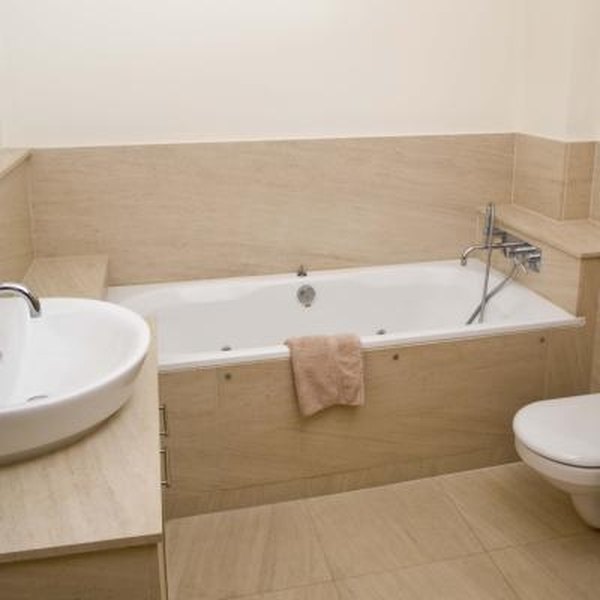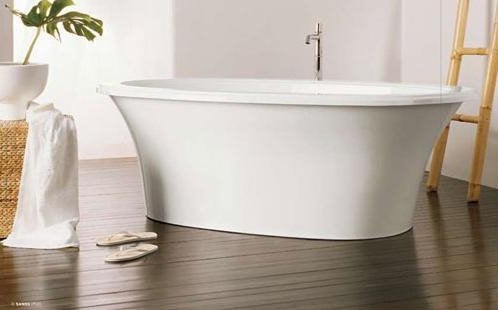Presented here in the next paragraph you will discover a good deal of excellent help and advice around How to Install a Bathtub.

Setting up a bath tub isn't specifically rocket science, however it does call for solid plumbing, woodworking, and also sometimes, tiling abilities. Changing an old bath tub with a new one is likewise a reasonably challenging task. If the old tub is easily easily accessible, the task can move rapidly; if you need to open up a wall to eliminate the old bathtub and position the brand-new bath tub, the task is a lot harder. In either instance, the job is within a house handyman's abilities, although you will need an assistant to vacate the old tub as well as embeded in the brand-new one. Make sure you have certified on your own for the job and are comfortable trying it. As opposed to hiring a professional to take control of a halfway-completed task, it is better to take into consideration employing one before you begin. Chances are you may require a specialist plumber to make tube links.
This article will assist you set up a brand-new bath tub in your washroom if you have already purchased a new tub as well as do not require to transform the setup of your previous water supply pipes.
Your devices and also material checklist must consist of the following:
Getting ready for the Installation
First of all, the supporting framework supplied with the bath should be fitted (if called for) according to the manufacturer's instructions. Next, fit the faucets or mixer to the bathtub. When fitting the faucet block, it is necessary to see to it that if the tap includes a plastic washer, it is fitted between the bath as well as the taps. On a plastic bath, it is also reasonable to fit a sustaining plate under the faucets system to stop strain on the bath tub.
Fit the adaptable faucet ports to the bottom of the two taps making use of 2 nuts and also olives (often provided with the bathtub). Fit the plug-hole electrical outlet by smearing mastic filler round the sink electrical outlet opening, and after that pass the outlet with the hole in the bath. Use the nut supplied by the producer to fit the plug-hole. Analyze the plug-hole electrical outlet for an inlet on the side for the overflow pipeline.
Next off, fit the end of the flexible overflow pipeline to the overflow outlet. Afterwards, screw the pipeline to the overflow face which need to be fitted inside the bathroom. Make certain you make use of every one of the supplied washers.
Connect the trap to the bottom of the waste outlet on the bathtub by winding the thread of the waste electrical outlet with silicone mastic or PTFE tape, and also screw on the catch to the outlet. Connect the bottom of the overflow tube in a similar manner.The bathroom must currently prepare to be fitted in its final position.
Removing Old Touches
If you require to change old taps with new ones as a part of your installation, after that the first thing you need to do is disconnect the water supply. After doing so, activate the faucets to drain pipes any type of water remaining in the system. The process of getting rid of the existing faucets can be rather bothersome due to the restricted accessibility that is commonly the situation.
Use a container wrench (crowsfoot spanner) or a tap tool to reverse the nut that links the supply pipes to the faucets. Have a fabric ready for the staying water that will originate from the pipelines. When the supply pipes have actually been eliminated, use the same device to loosen the nut that holds the faucets onto the bath/basin. You will certainly require to quit the single faucets from turning throughout this procedure. When the faucets have been removed, the holes in the bath/basin will have to be cleaned of any old securing compound.
Prior to proceeding to fit the brand-new taps, compare the pipe links on the old taps to the brand-new faucets. If the old faucets are longer than the new faucets, then a shank adapter is needed for the new faucets to fit.
Installing the Bath tub
Utilizing both wooden boards under its feet, put the bathtub in the called for setting. The wood boards are valuable in equally spreading the weight of the tub over the area of the boards rather than focusing all the weight onto 4 small points.
The following objective is to ensure that the tub is leveled all round. This can be attained by checking the spirit level as well as readjusting the feet on the bathtub up until the level reviews level.
To set up faucets, fit all-time low of the furthest versatile faucet adapter to the appropriate supply pipeline by making a compression join; then do the exact same for the various other tap.
Switch on the water system and also examine all joints and also new pipework for leaks as well as tighten them if essential. Load the bathtub and likewise examine the overflow electrical outlet and the normal electrical outlet for leaks.
Finally, fix the bath paneling as explained in the maker's user's manual. Tiling and also securing around the bathtub should wait up until the bath tub has actually been made use of at least when as this will settle it into its final position.
Fitting New Taps
If the tails of the new taps are plastic, then you will require a plastic port to avoid damages to the thread. One end of the port fits on the plastic tail of the tap as well as the other end supplies a link to the existing supply pipes.
If you need to fit a monobloc, then you will call for lowering couplers, which attaches the 10mm pipeline of the monobloc to the typical 15mm supply pipeline.
Next off, place the faucet in the placing opening in the bath/basin making sure that the washing machines remain in location between the tap and also the sink. Safeguard the faucet in position with the maker supplied backnut. Once the tap is securely in position, the supply pipes can be attached to the tails of the faucets. The faucets can either be linked by using corrugated copper piping or with normal tap adapters. The previous kind must be linked to the tap ends initially, tightening up just by hand. The supply pipes can later be attached to the other end. Tighten both ends with a spanner after both ends have been attached.
Tiling Around the Bath tub
In the location where the bath meets the ceramic tile, it is required to seal the accompanies a silicone rubber caulking. This is necessary as the installation can move enough to fracture a stiff seal, triggering the water to penetrate the wall surface in between the bath and the tiling, bring about issues with wetness and also possible leaks to the ceiling listed below.
You can select from a variety of coloured sealers to blend in your fixtures and also fittings. They are sold in tubes and cartridges, and also can sealing voids as much as a width of 3mm (1/8 inch). If you have a bigger gap to load, you can load it with twists of drenched newspaper or soft rope. Bear in mind to always load the tub with water before securing, to allow for the activity experienced when the tub remains in use. The sealant can split fairly very early if you do not take into consideration this activity before securing.
Additionally, ceramic coving or quadrant floor tiles can be utilized to border the bath or shower tray. Plastic strips of coving, which are easy to use and also cut to dimension, are likewise conveniently available on the market. It is advisable to fit the ceramic tiles using waterproof or water resistant glue as well as cement.
How to Install a Freestanding Bathtub?
Installing a freestanding bathtub or any kind of bathtub is not a difficult task if you have a sophisticated guide on installing a freestanding bathtub in your bathroom. Aside from getting the freestanding bathtub to your bathroom, you can do all the work without paying a plumber. A bathroom with a bathtub is a retreat where you can feel the sensation of coming home and soaking in that hot water. It is a great way to remove all the stress from your day.
This guide will walk you through installing a freestanding bathtub in simple steps and help you find relief.
Slope
Make sure your bathroom has a proper slope. If your floor lacks a slope, the water flow to the drain will not function, which leads to a blocked drain which can cost you money. You can use the level device to see your bathroom's vertical and horizontal aspects. Once you have that information, you must carry out the next step.
Placement
A freestanding bathtub has a unique characteristic that helps you bring elegance to your bathroom. A freestanding bathtub comes in various sizes and shapes suitable for different types of bathrooms.
According to the information you gathered from the level device, you must pick a bathtub that suits your style and fits your bathroom aesthetically. You can place a freestanding bathtub virtually anywhere, such as in the corner, near the wall, or even at the center of your bathroom. However, you must ensure proper plumbing where you want to install the tub. If not, then you must call a plumber.
Clean the bathroom floor
After deciding where to place the bathtub, you must clean the entire bathroom floor so that the dust and debris do not accumulate underneath the tub. Simple cleaning is enough, and you will clean it again after the installation.
Steps to Install a Freestanding Bathtub:
STEP 1: Place the protective blanket in the adjacent area where you want to install the bathtub. It will help you protect the bathtub's sides when you do the installation.
STEP 2: Now, place the 4x4 lumber in the area where you want to install the bathtub. Place the bathtub on top of the lumber, and align the drain line with the bathtub drain.
STEP 3: A freestanding bathtub comes with a drain kit. If not, make sure you purchase one with your bathtub. You can pop that drain kit and align it with your bathroom drain line. Ensure that you tighten the drain nut enough so there is no water leakage. You must also clean the bathtub’s drain to remove the factory dirt and debris.
STEP 4: Clean the drain hole in your bathroom. It helps to do the installation without any water blockage. A drain cleaner or bleach will suffice. Once the drain dries entirely, take a small amount of clear silicon and place it around the underside of the pipe flange.
STEP 5: Attach the drain tailpiece to the bottom of the bathtub. Place the rubber or plastic bushing with the plumbing material at the top of the tailpiece and screw the drain nut up the tube until it tightens both the bathtub’s drain and the drain tailpiece. Now you must add the lubricant to the seal to ensure there is no water leakage in the pipe connection.
STEP 6: Place caulk around the bottom edge of the bathtub. Take out the lumbar support and carefully bring the bathtub to the floor. Use a damp cloth to clean the excess caulk and debris and plumber putty to cover the tub drains and the floor.
Tips to Maintain a Freestanding Bathtub:
Always look for the clog in the drain. You can pull it out with a small stick if hair or debris is in the gutter. Use mild cleaning components, which will help you preserve the bathtub for a long time and will also help you remove surface-level scratches. Do not use strong solutions such as concentrated bleach to remove stains. Instead, mix water and diluted bleach with a ratio of 10:2, respectively. Apply it to the tub's surface and leave it for 15-20 minutes to remove any surface-level stains. Always check the floor drain. You may unclog it using any small sticks or a small vacuum to suck out all the debris. Check the heater or faucet immediately if you smell rust or grease in the water. Rust in the water may stain or damage the bathtub in the long run. If you want to sand the bathtub, try using 400 grit sandpaper or 600 grit sandpaper for a more refined finish.

I was made aware of that editorial on Installing A Bathtub from a friend on a different web page. Are you aware of somebody else who is occupied with the topic? Be sure promote it. We recognize the value of reading our article about How to Install a Bathtub: Install an Acrylic Tub and Tub Surround.
Apply Now
 Ben Savage Then & Now!
Ben Savage Then & Now! Dylan and Cole Sprouse Then & Now!
Dylan and Cole Sprouse Then & Now! Traci Lords Then & Now!
Traci Lords Then & Now! Jaclyn Smith Then & Now!
Jaclyn Smith Then & Now! Robin McGraw Then & Now!
Robin McGraw Then & Now!